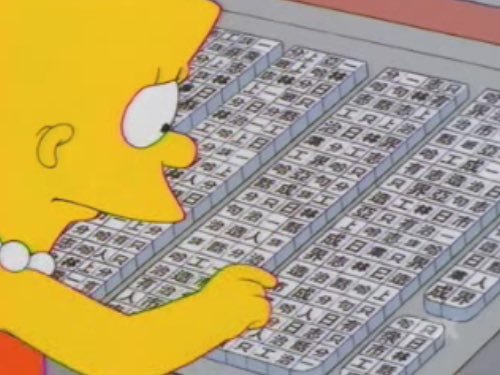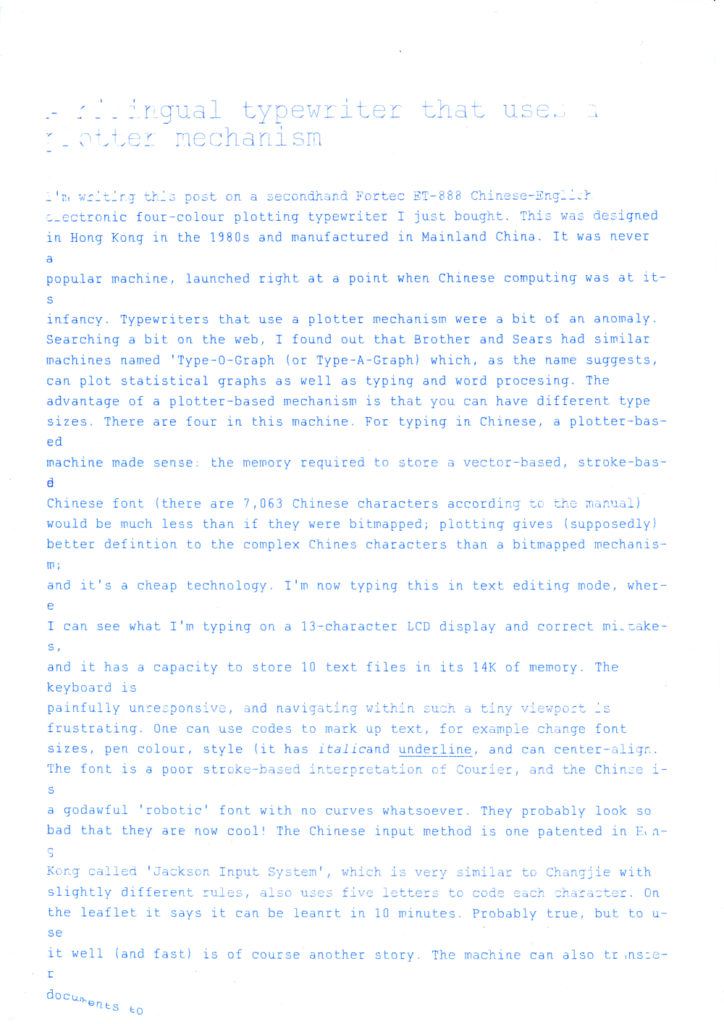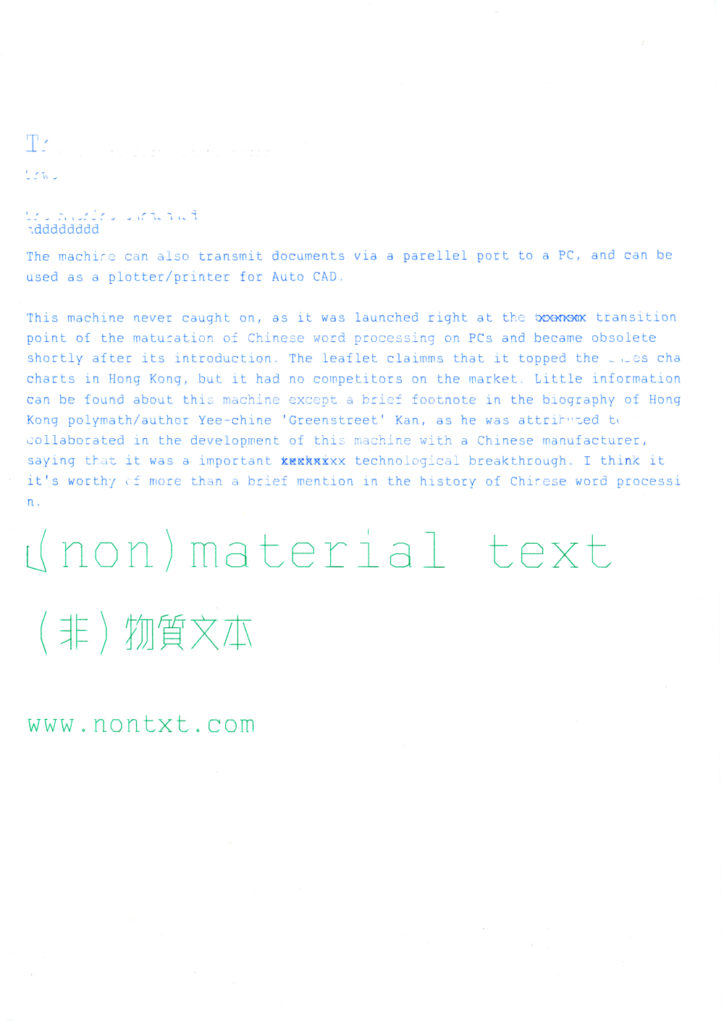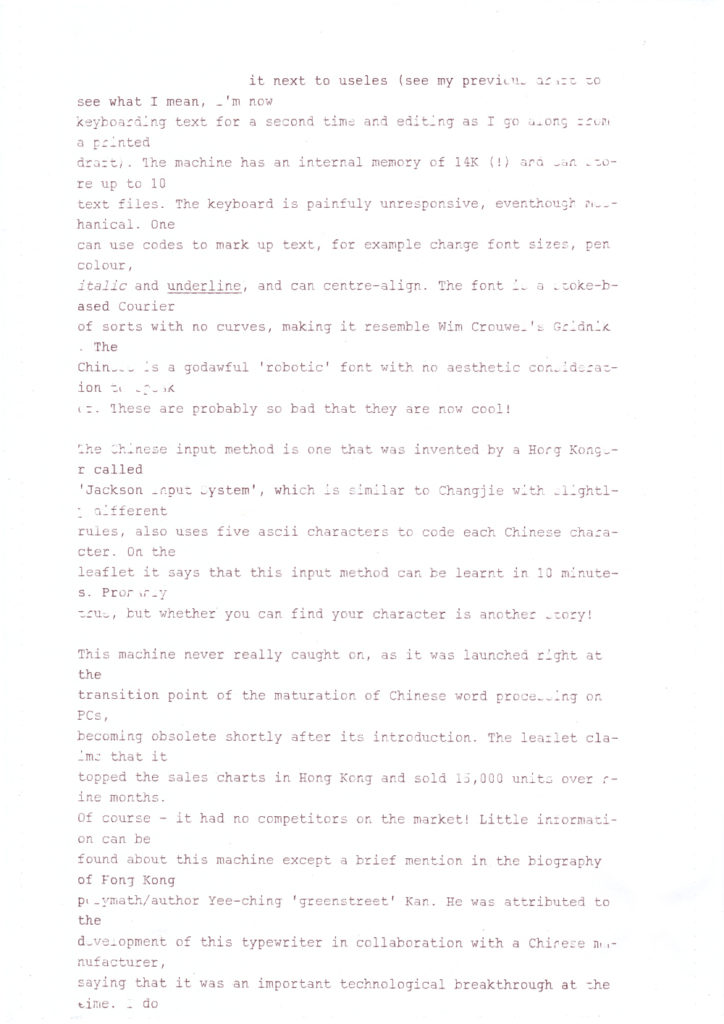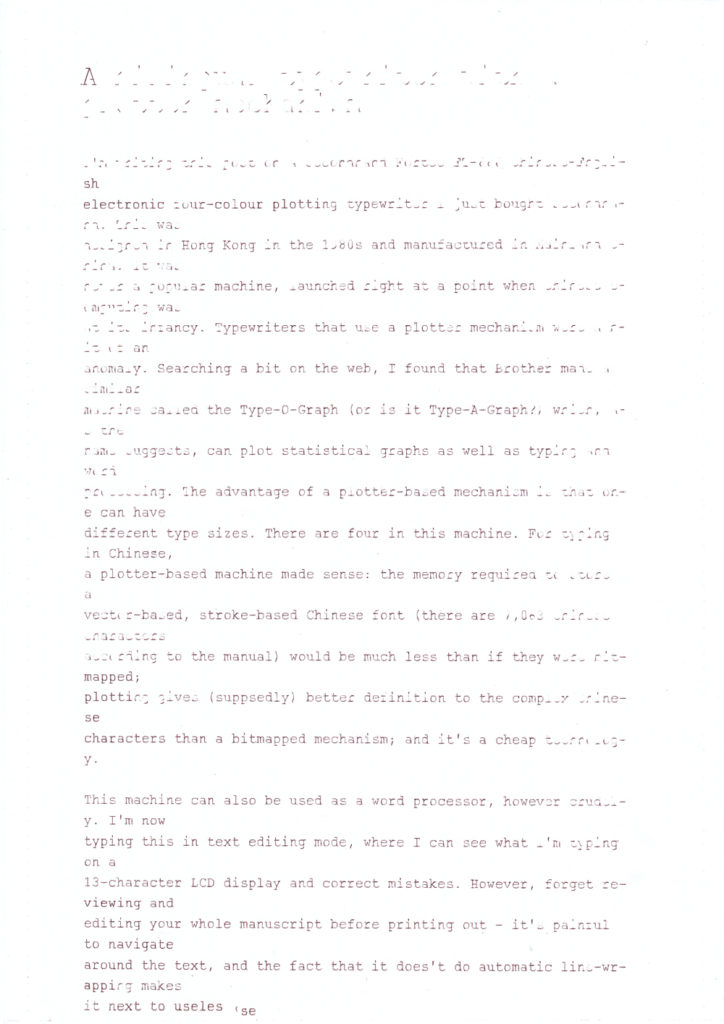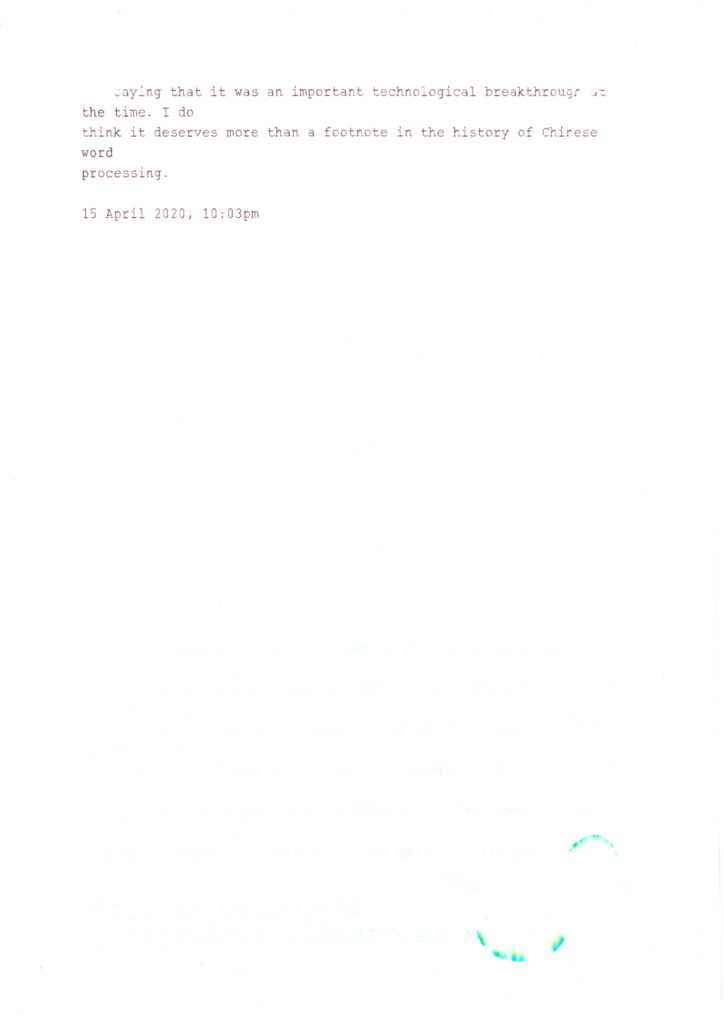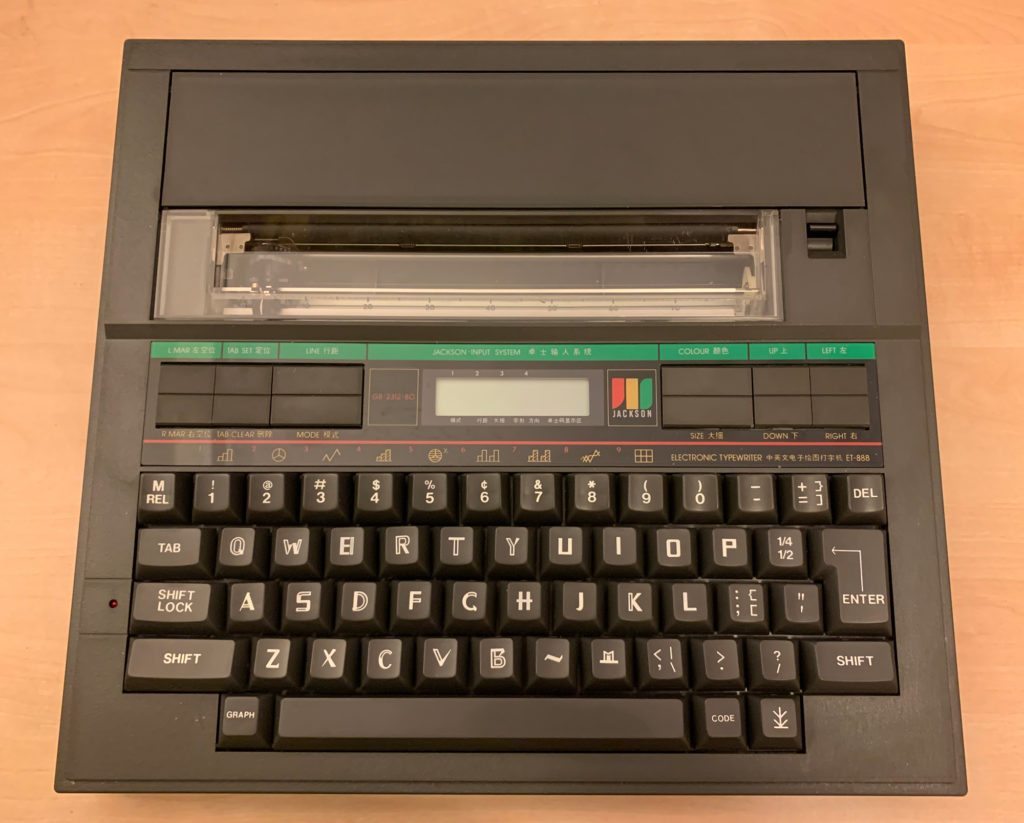
I’m writing this post on a secondhand 科達牌中英文電子四色繪圖打字機 Fortec ET-888 Chinese–English electronic four-colour plotting typewriter I just bought. This was designed in Hong Kong in the 1980s and manufactured in Mainland China. It was never a popular machine, launched right at a point when Chinese computing was at its infancy. Typewriters that use a plotter mechanism were a bit of an anomaly. Searching on the web, I came across a plotter typewriter made by Brother and Sears called the Type-O-Graph (or is it Type-A-Graph?), which, as the name suggests, can plot statistical graphs as well as typing and word processing. Incidentally, I never realised that cheap plotters were available for home use in the 1970s–80s. This typewriter uses the same kind of mechanism and pens as the Atari 1020 and Commodore 1520 plotters. There are still a lot of enthusiasts of these plotters out there but new pens are a bit hard to come by.
The advantage of a plotter-based mechanism is that it can have different type sizes, and can make drawings. For typing in Chinese, a plotter-based machine made sense: the memory required to store a vector-based, stroke-based Chinese font would be much less than if they were bitmapped (this machine can print 7,063 Chinese characters). Plotting also (supposedly) gives better definition to the complex Chinese characters than a bitmapped mechanism. And it’s a cheap technology. The image is quite faint though, and it is not able to produce bold type.
This machine can be used as a typewriter, printer/plotter (hooked up to a PC through its parallel port) and a word processor, however crudely. The first and second drafts of this post were written on this machine in word processing mode. With a 13-character LCD display, text can be corrected and edited before printing out. The machine has an internal memory of 14K (!) and can store up to 10 text files, and transmitted to a computer if needed (why would one do that I wonder). Text can be marked up using control codes to change attributes such as font sizes, pen colour, italic/underline and centre alignment. The keyboard is terribly unresponsive. Forget about reviewing and editing whole manuscripts before printing out – it’s painful to navigate around in the tiny viewport, and the fact that it doesn’t do automatic line-wrapping makes it next to useless (see the numerous unsucessful printouts that I made in the images below). I’m now re-typing and editing as I work from my two printed drafts.
The font is a stroke-based Courier of sorts with no curves, making it resemble Wim Crouwel’s Gridnik. The Chinese is a godawful ‘robotic’ font with no aesthetic considerations to speak of. These are probably so bad that they are the new cool.
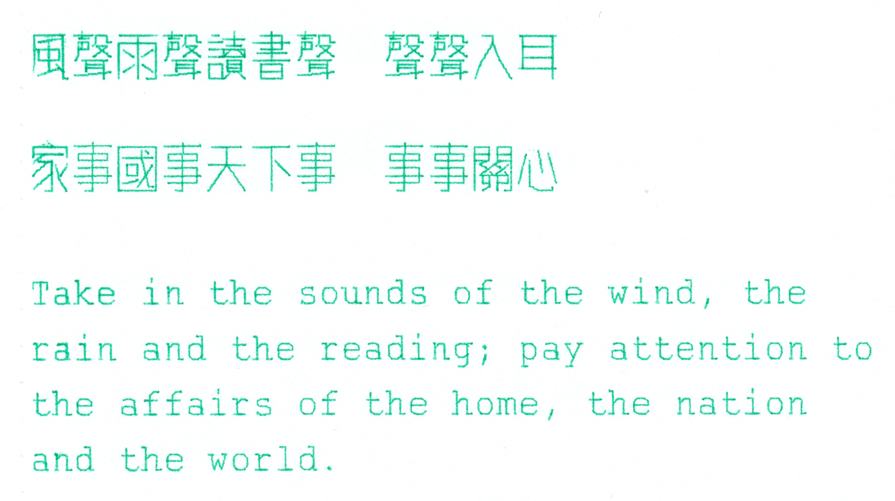
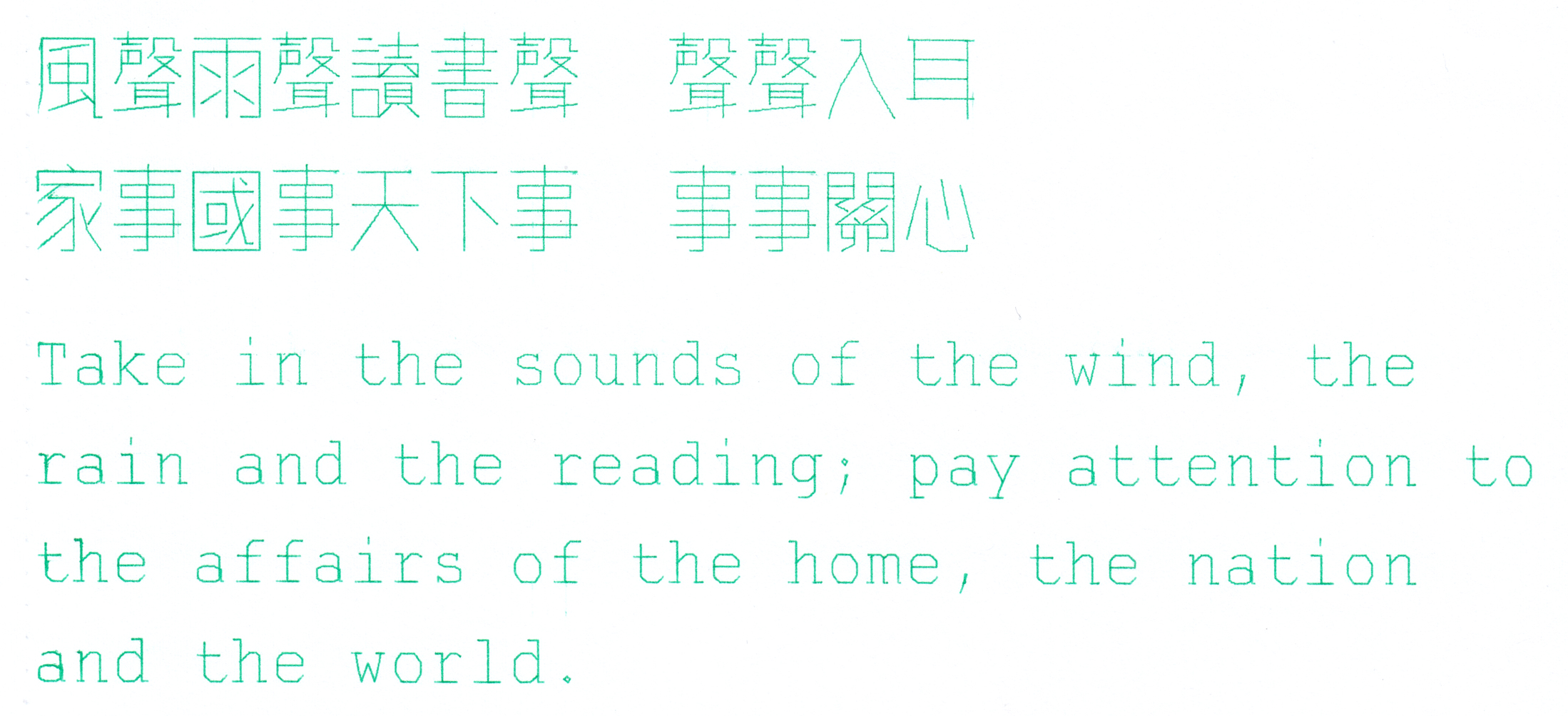
The Chinese input method is one that was invented by a Hong Konger 區卓宣 Cheuk-suen Au (transliterated) called 卓士字母輸入法 Jackson Input System, which is similar to Changjie with slightly different rules, and also uses five ascii characters to code each Chinese character. On the leaflet it says that this input method can be learnt in 10 minutes. Probably true, but whether you can find your character is another story.
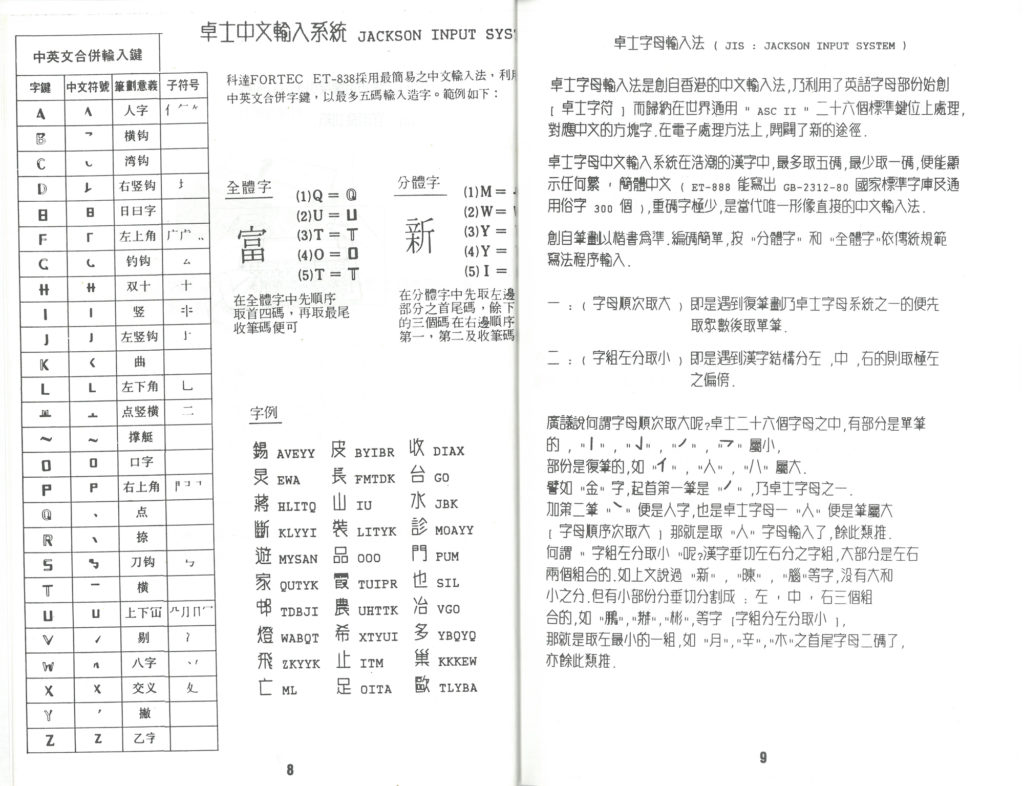
This machine never really caught on, as it was launched right at the transition point of the maturation of Chinese word processing on PCs, becoming obsolete shortly after its introduction. The leaflet claims that it topped the sales charts in Hong Kong and sold 15,000 units over nine months. Of course: it had no competitors on the market. Little information can be found about this machine except a passing mention in the Wikipedia page of Hong Kong polymath/author 簡而清 Yee-ching ‘Greenstreet’ Kan. He was attributed to the development of this typewriter in collaboration with a Chinese manufacturer, saying that it was an important technological breakthrough at the time. I do think it deserves more than a footnote in the history of Chinese word processing.
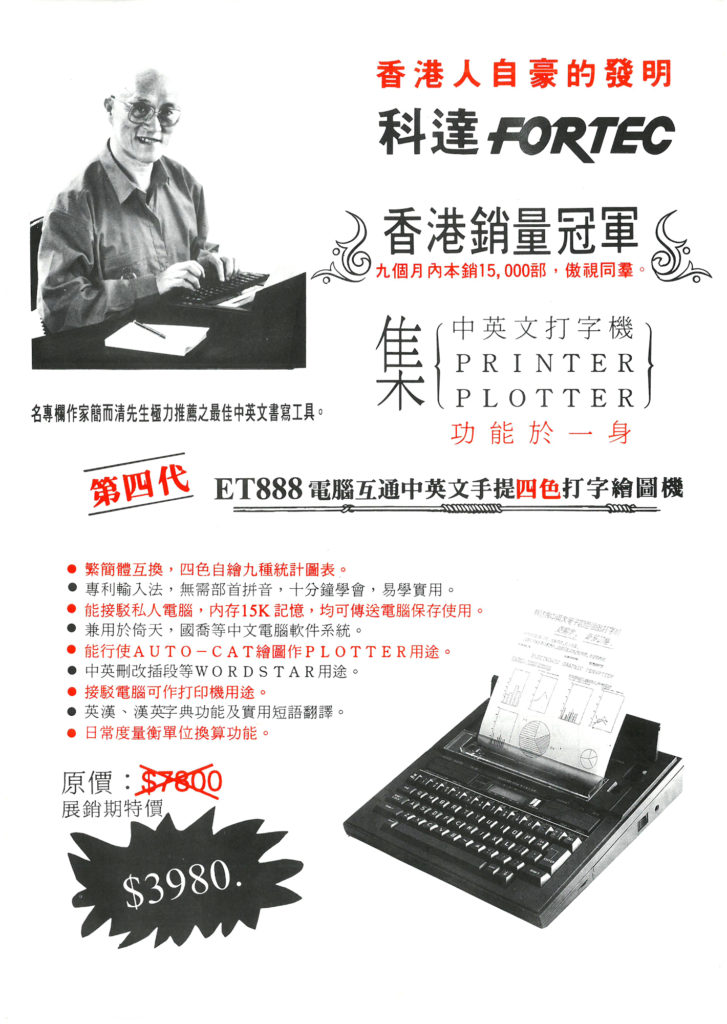
Fortec ET-800 user’s manual (PDF 4MB)
Fortec ET-800 Chinese code reference booklet (PDF 3.4MB)
(I’m sharing these here as historical records of a legacy technology. If you believe this violates copyright, please let me know and I’ll take them down. )
(First and second drafts written on the Fortec ET-888, final draft in Byword)
